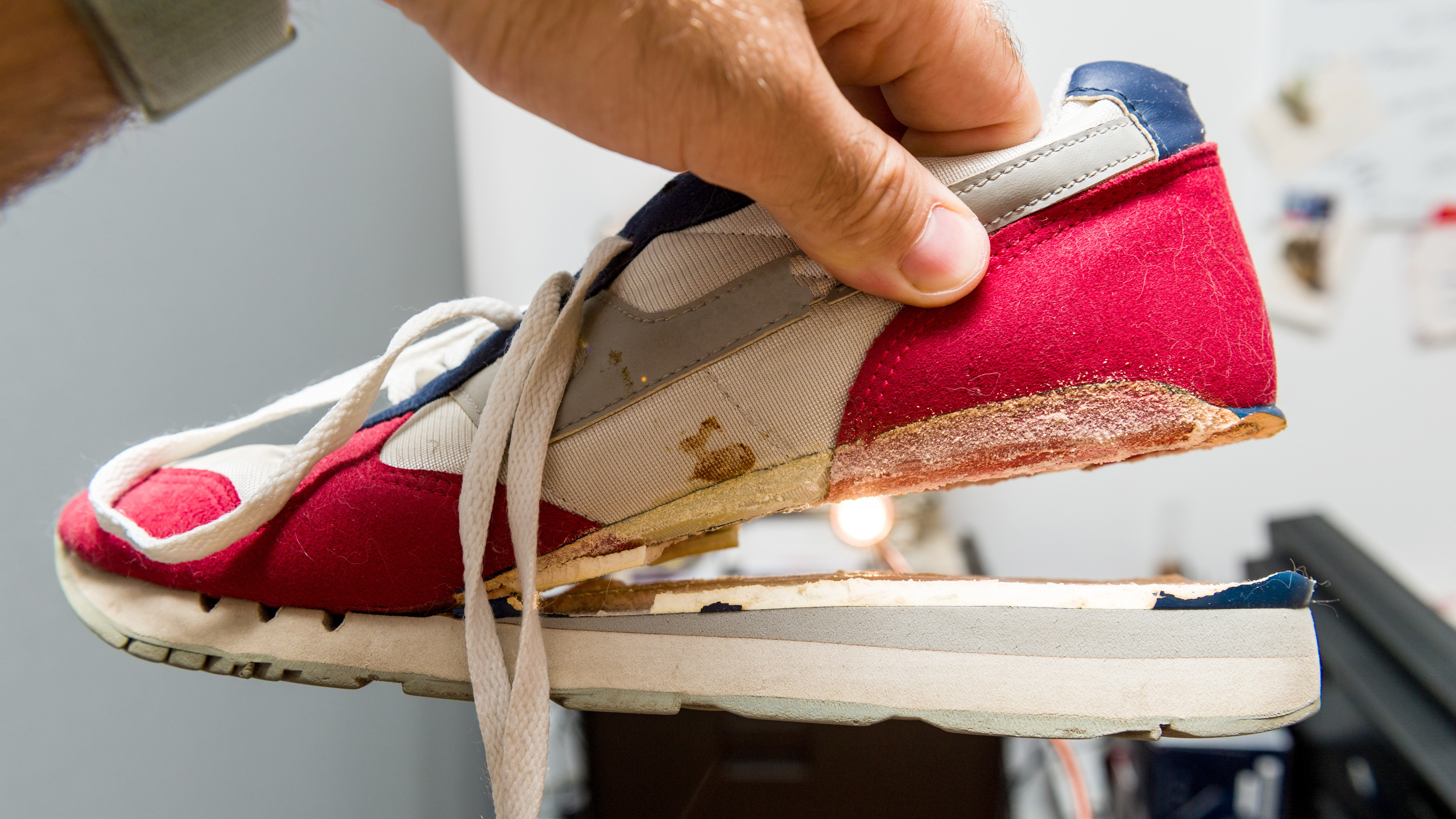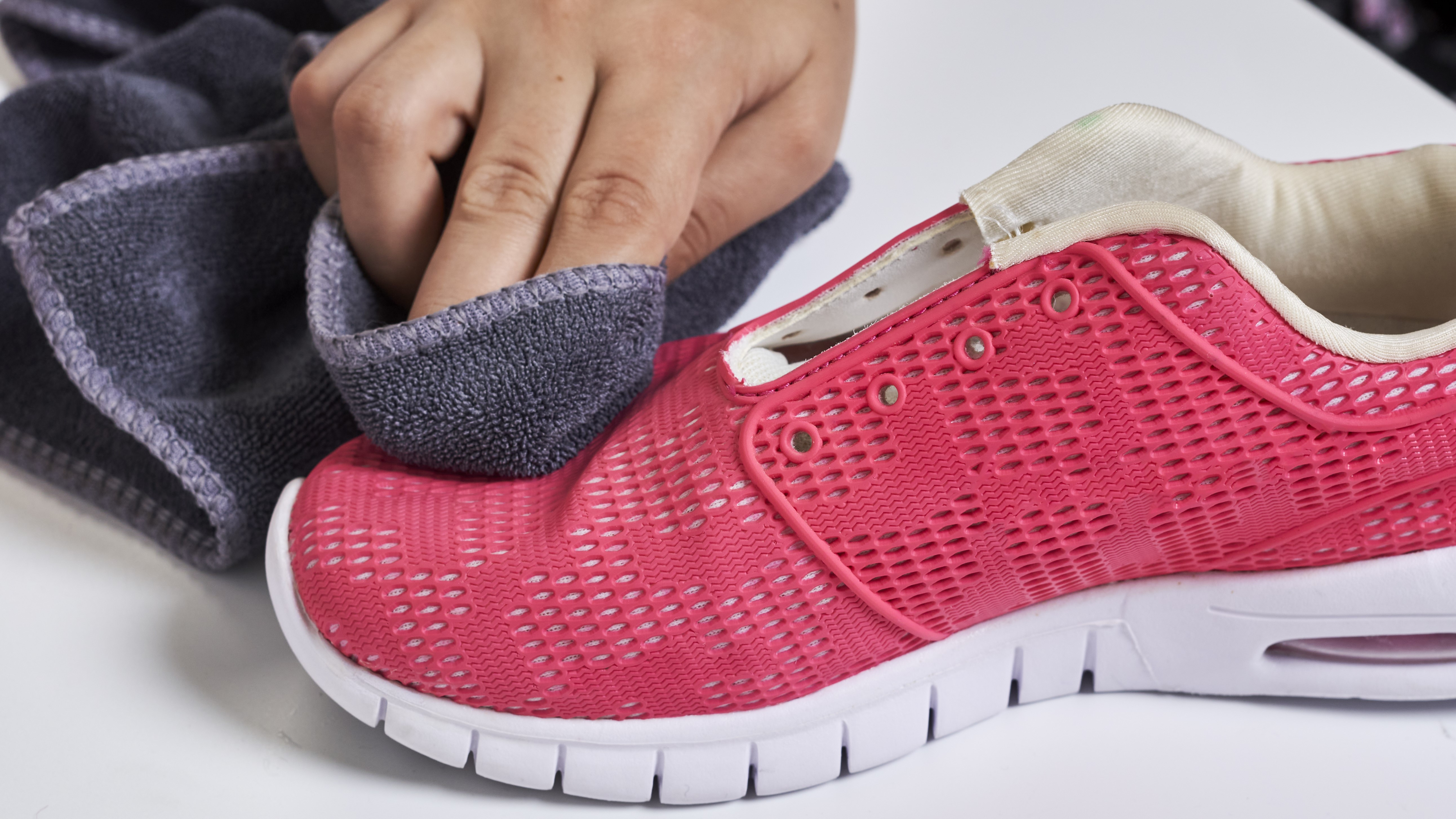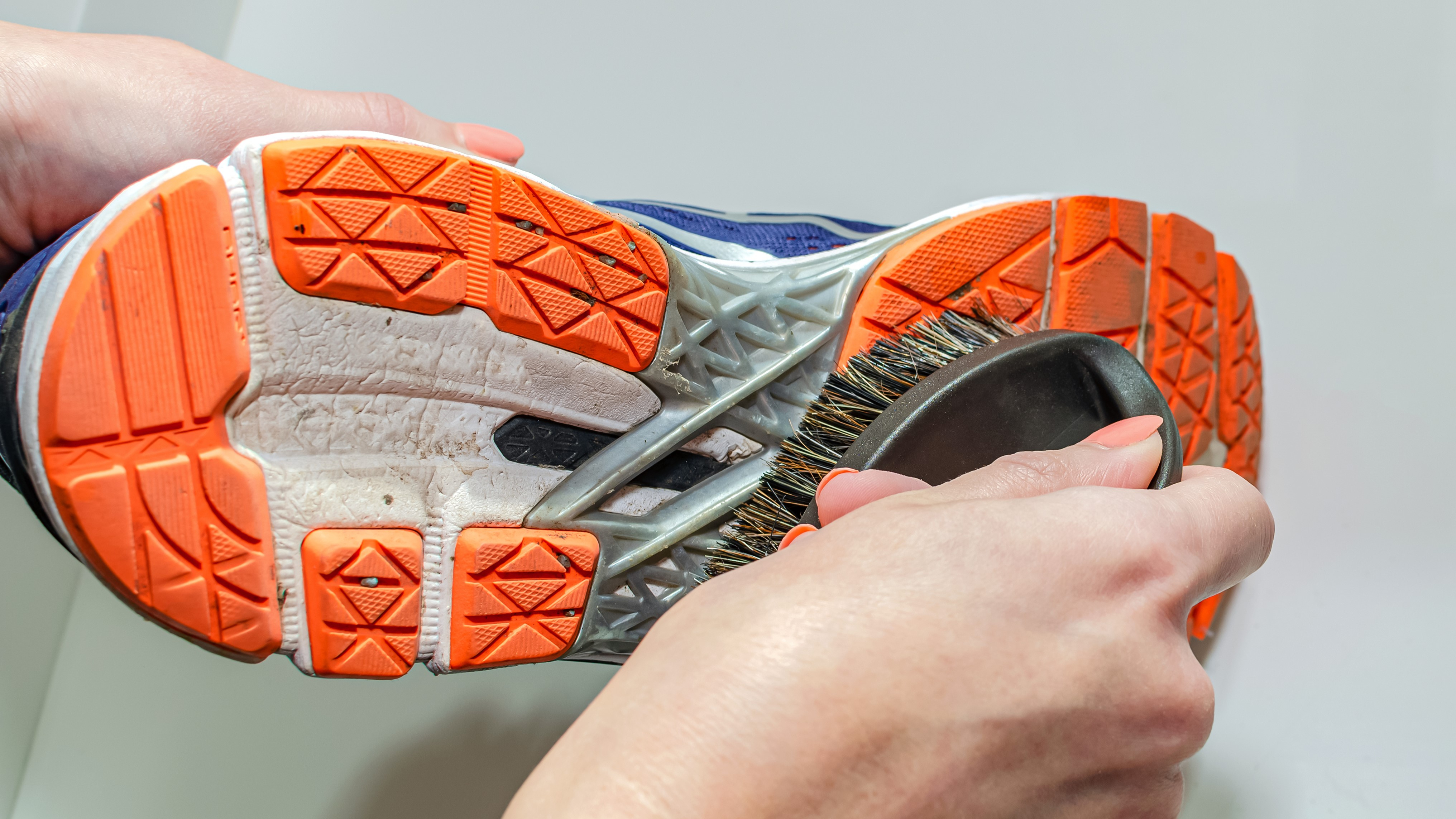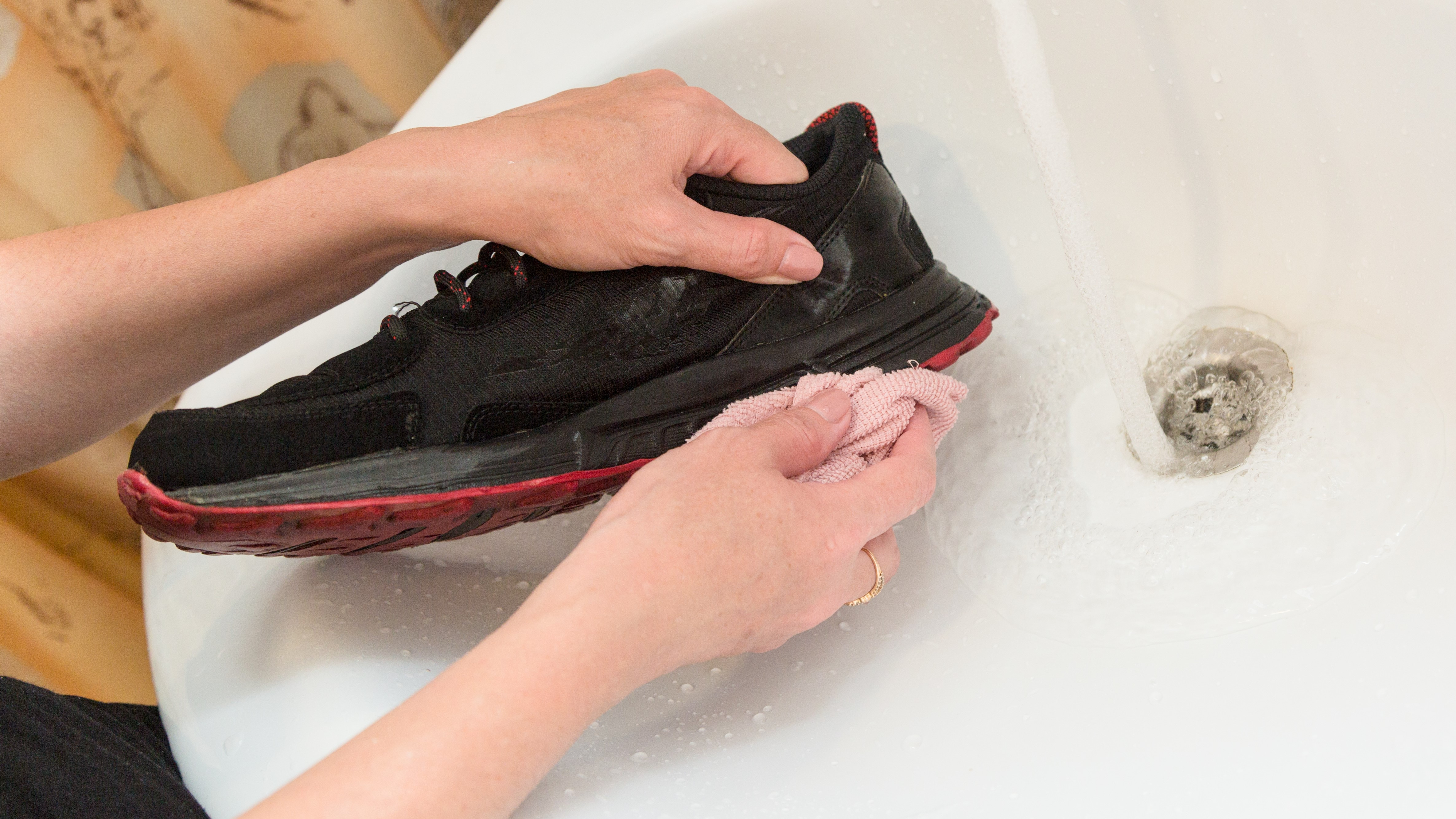
Running shoes get dirty – it's inevitable. Cleaning them promptly will keep them fresh, flexible and breathable, but washing them the wrong way can cause them to fail early, abrading the mesh upper, cracking the rubber sole, damaging the stitching, and breaking down the adhesives holding the components together (our guide to the anatomy of a running shoe explains how important that is).
Your washing machine might have a special setting for cleaning sports shoes, which will typically use cool water and minimal spinning, but the safest option is always to wash them by hand instead.
Different road running shoe and trail running shoe brands have their own suggestions, so we've rounded up advice from all the biggest names here. If in doubt, take the more conservative option and stick with the gentlest products and techniques.
Tips from Hoka and Saucony
Hoka recommends washing your shoes gently by hand using cold water and mild detergent. First, remove the laces (which can be washed with your regular sportswear), the insoles and any liners. If your shoes are muddy, remove the worst of the muck from the outside with a paper towel, then gently scrub them clean using a non-abrasive cleaner.
"Mix a small dab of your chosen soaping agent (natural dye-free detergent, dish soap, or even dandruff shampoo can all work fine) into cool water, and gently work into dirty areas of the shoes and insoles with the toothbrush until there’s a lather," says Hoka.
When all the dirt is removed, wipe your shoes down with a clean, damp cloth or rag, then blot excess water with a clean towel, stuff them with newspaper, and leave them to dry overnight.
Saucony's instructions for cleaning running shoes are very similar, and both companies advise allowing your clean insoles to dry completely before putting them back inside.

Advice from Nike
Nike takes a slightly different approach, and suggests using warm water with a touch of mild cleaner like dish soap or laundry detergent for colorful shoes, or a paste of bicarbonate of soda and water as a gentle stain remover for white or light-colored shoes.
"Micellar water is another option," says Emily Shiffer at Nike. "This fluid is made from purified water, moisturisers and cleansing compounds that form spherical micelles, which pull dirt and oil away from surfaces." You can find micellar water in supermarkets and drug store alongside face washes.
Once you've got your cleaner ready, it's time to get to work with a dry toothbrush or shoe brush and get rid of the worst of the dirt from the upper, outsole, and midsole of each shoe.

When the surface grime is gone, take out the laces and give them a careful wash by hand, or put them in a laundry bag in the washing machine. If your laces are white, Nike suggests brightening them back up with bleach.
"Wearing latex or other cleaning gloves, mix three tablespoons of bleach in a gallon of water," says Shiffer. "Then, place your laces in a mesh laundry bag before submerging them in the bleach solution. (If they float to the top, use something heavy to keep the bag down and secured.)"
Scrub the outsoles with your cleanser and a brush. If your insoles are less than fresh, you can give them a gentle wash with the same stuff, then work the cleanser into the uppers with a soft-bristled brush or wash cloth.
When you're done, pat the shoes with a towel or microfiber cloth to remove soapy water. "The key is to try to avoid rubbing the material, which can wear down the shoe fabric," says Shiffer. You can then leave the shoes to air dry.
Vivobarefoot and Inov-8
Vivobarefoot's advice is as minimalist as its barefoot running shoes.
"When possible, it’s best to use natural products for cleaning and weather protection," it says. "Soapy cold water beats a washing machine when it comes to our performance shoes. Products such as Nikwax for leather [are] great too!"
Inov-8 (maker of some of our favorite trail running shoes) also recommends cold water, but advises washing your shoes as soon as possible after your run, and skipping the soap. Instead, it advises removing the insoles and laces (or at least loosening them), brushing off the worst of the mud, then rinsing under cold running water while brushing to finish the job.
"Place your shoes in a warm room, an airing cupboard or outside (but not in direct sunlight) to dry," says Inov-8. "Do not dry your shoes in a tumble drier or next to radiators, fireplaces or hot summer sunlight. You can speed up the drying process by removing the shoe’s insole and shoelaces, and by stuffing them with newspaper.
If your shoes have a waterproof finish, you can renew it with a product like Grangers Footwear Repel Plus.

Recommendations from On
Adam Godfrey, lead retail advisor at the On flagship store on Regent Street, London, offers extensive instructions on cleaning your running shoes without damaging them. He advises using warm water and a mild detergent, and only using a baking soda paste on the outsoles if they are particularly dirty.
If you don't have time to wait for your shoes to dry, you can clap them together to knock off the worst of the mud, then use a soft brush to remove as much dirt as possible. Leave them to air, ideally with the laces and insoles removed.
"We never recommend putting dirty running shoes in the washing machine – or the tumble dryer," says Godfrey. "The combination of sustained heat and detergent exposure can damage seams, shoe bondings and the overall integrity of the structure and longer-term support of the shoe."
- The best road running shoes: our top recommendations







